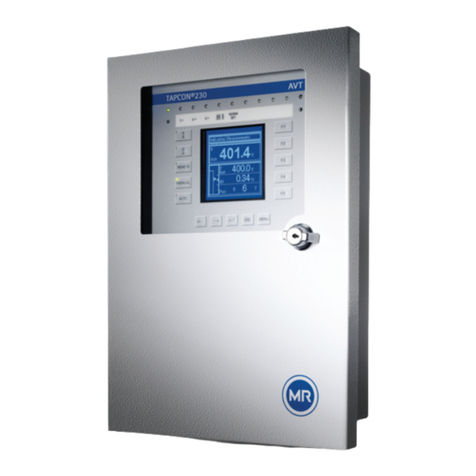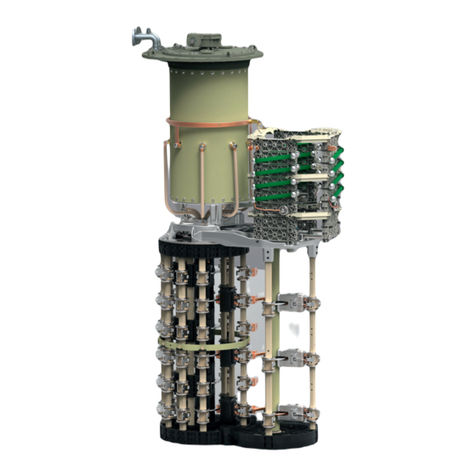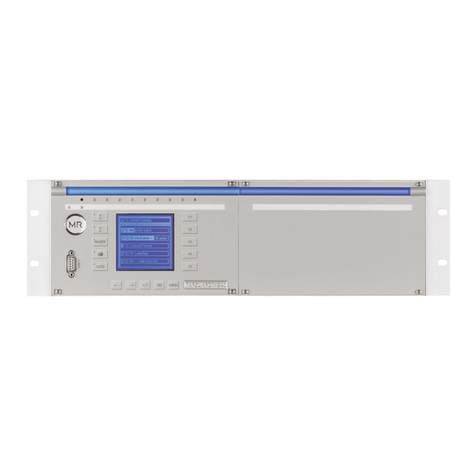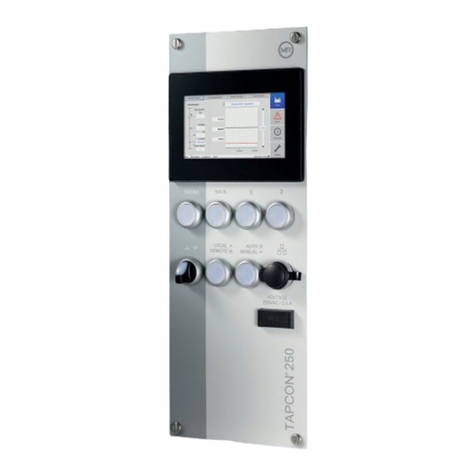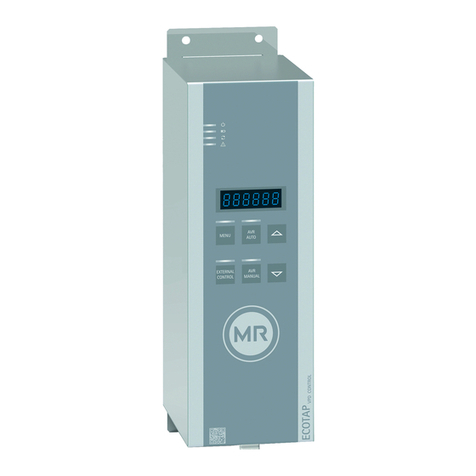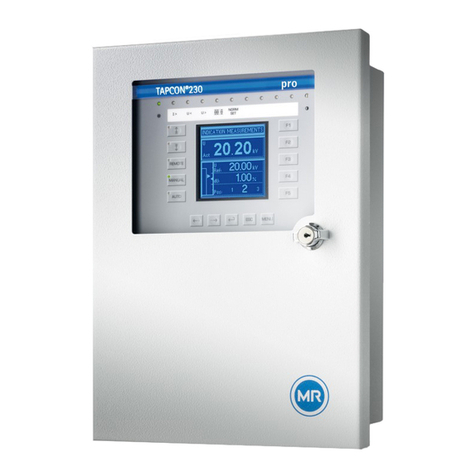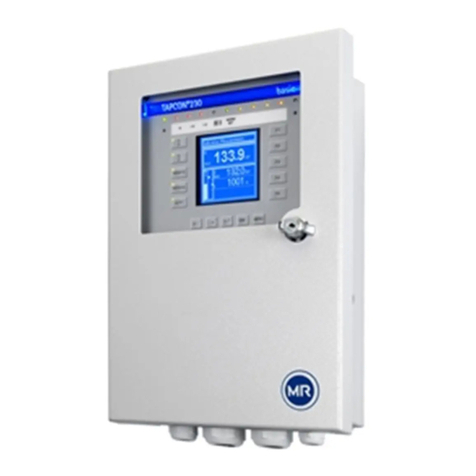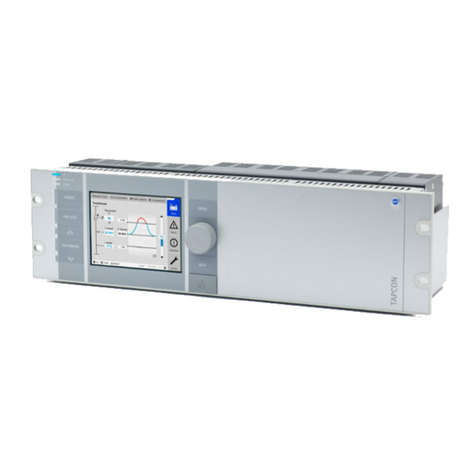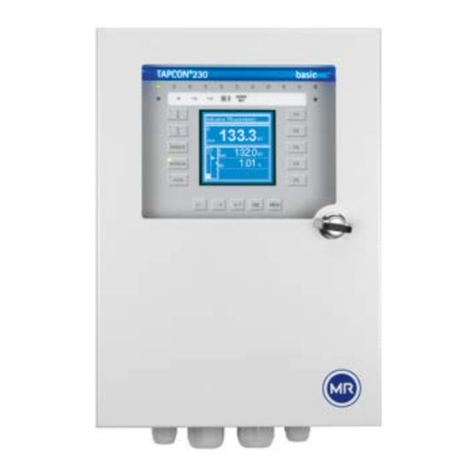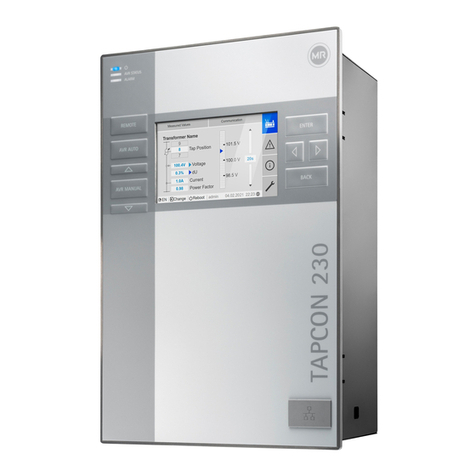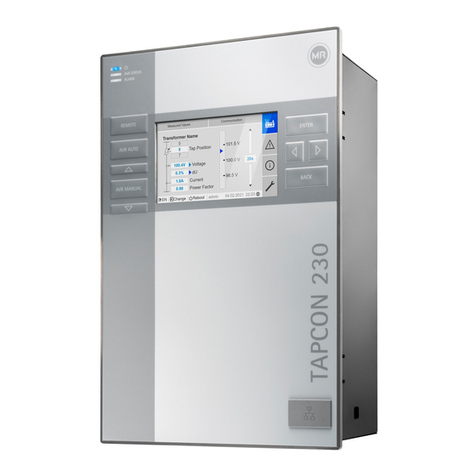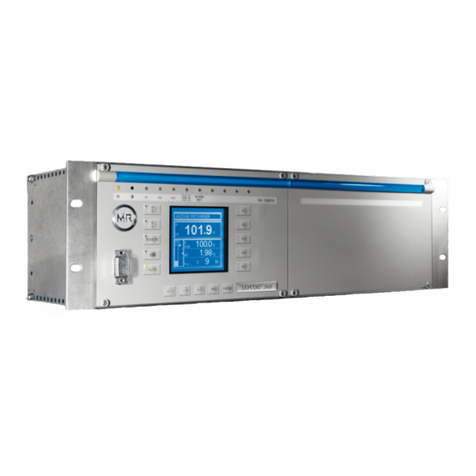
Table of contents
Maschinenfabrik Reinhausen GmbH 202063587317/21 ENTAPCON®
8.12 Voltage regulation........................................................................................................................... 138
8.12.1 Setting the desired value...................................................................................................................................138
8.13 Reactive power regulation (optional) .............................................................................................. 156
8.14 Transformer data ............................................................................................................................ 159
8.14.1 Setting transformer data....................................................................................................................................160
8.14.2 Circuit examples for voltage transformers and current transformers ................................................................161
8.15 Measurement.................................................................................................................................. 171
8.15.1 UI measuring channels .....................................................................................................................................171
8.15.2 Control variable .................................................................................................................................................172
8.15.3 Regulation mode ...............................................................................................................................................172
8.15.4 Display power factor negative ...........................................................................................................................172
8.16 Line drop compensation ................................................................................................................. 173
8.16.1 R&X compensation ...........................................................................................................................................173
8.16.2 Z compensation.................................................................................................................................................175
8.17 Tap position capture ....................................................................................................................... 176
8.17.1 Digital tap position capture................................................................................................................................177
8.17.2 Analog tap position capture...............................................................................................................................177
8.18 Parallel operation (optional)............................................................................................................ 179
8.18.1 Parallel operation methods ...............................................................................................................................180
8.18.2 Configuring parallel operation ...........................................................................................................................188
8.18.3 TAPCON® 2xx retrofit.......................................................................................................................................193
8.18.4 Detecting parallel operation via group inputs (optional) ....................................................................................194
8.18.5 Detecting parallel operation via topology ..........................................................................................................195
8.19 Monitoring functions........................................................................................................................ 199
8.19.1 Voltage monitoring ............................................................................................................................................199
8.19.2 Current monitoring ............................................................................................................................................202
8.19.3 Power monitoring ..............................................................................................................................................205
8.19.4 Power flow monitoring.......................................................................................................................................207
8.19.5 Tap position monitoring (optional).....................................................................................................................209
8.19.6 U bandwidth monitoring ....................................................................................................................................210
8.19.7 Q bandwidth monitoring (optional) ....................................................................................................................212
8.19.8 Phase symmetry monitoring..............................................................................................................................214
8.19.9 Switching interval monitoring ............................................................................................................................215
8.20 Measured values ............................................................................................................................ 216
8.20.1 Displaying current measured values .................................................................................................................217
8.20.2 Displaying measured value recorder (optional).................................................................................................218
